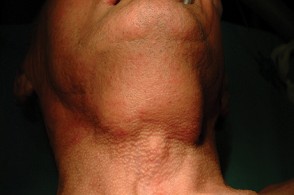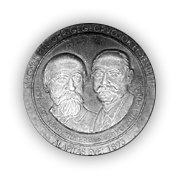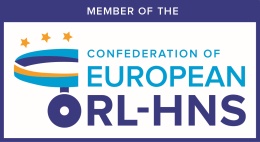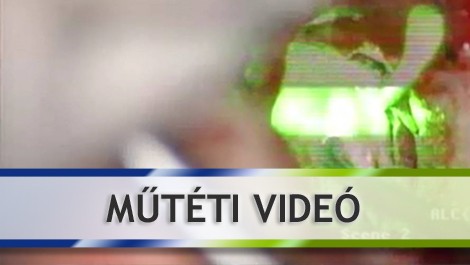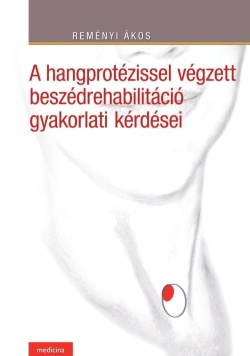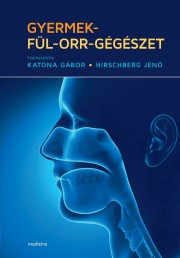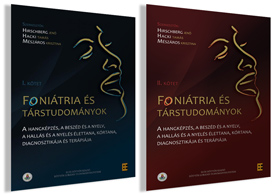Összefoglalás
Célkitűzés: A szerzett felső légúti szűkületek sebészi kezelése nagy kihívást és interdiszciplináris együttműködést igénylő feladat, különösen kisgyermekkorban. Esetismertetésünkben egy komplex vitiummal, a 33. gesztációs héten született gyermek szövődményes szívsebészeti beavatkozást, és hosszan tartó intubációt követően kialakult laryngotrachealis szűkületének komplex sebészi megoldását mutatjuk be.
Módszer: Első lépésben a glotto-subglotticus teret szűkítő, a tracheostoma környékét is involváló, a légutat szűkítő szövetburjánzást távolítottunk el a stomanyíláson keresztül. Intraoperatív fagyasztásos szövettani vizsgálat malignitást nem igazolt, így a gégeváz azonnali rekonstrukciója és a tracheostoma egy lépésben történő megszűntetése mellett döntöttünk. A gyűrűporc heges részének reszekálása után slide laryngotracheopexiát végeztünk. Bal oldali hangszalagbénulás miatt második lépésben endoszkópos arytenoid abdukciós lateropexia történt.
Eredmények: A korai posztoperatív időszakban végzett bronchoszkópia során kellően tág supraglotticus tér, hangrés és subglottis igazolódott. A gyermeket a hangajak lateralizációt követő 4. napon definitíven extubáltuk, nazogasztrikus szondáját eltávolítottuk. A 9 hónapos utánkövetési idő alatt nehézlégzés nem jelentkezett, ismételt légútsebészeti beavatkozás nem vált szükségessé. A gyermek per os táplálása akadálytalan, fizikális fejlődése alapbetegségeihez mérten megfelelő.
Következtetés: Klinikánkon az utóbbi években rutinszerűen végzett innovatív légútsebészeti módszerek lehetővé teszik a gége több alrégióját is érintő statikus és dinamikus szűkületek megoldását, amelynek eredményeként a gyermekek a későbbiekben teljes értékű életet élhetnek. Obstrukciót okozó idegenszövetek esetén a gége porcos váza akár nagymértékben is reszekálható, hiszen a lokális trachealebeny felhasználásával a gége csaknem korlátlanul augmentálható, így azonnali stabil, a fiziológiásnál tágabb légút hozható létre. A paretikus hangajak minimálisan invazív, öltésekkel történő lateralizálásával pedig biztosítható a gége egyéb funkcióinak (hangképzés, nyelés) megtartása is.
Kulcsszavak
endoszkópos arytenoid abdukciós lateropexia, hangajakbénulás, slide laryngotracheopexia, szerzett laryngotrachealis szűkület, tracheareszekció
Complex surgical management of acquired combined laryngotracheal stenosis in early childhood: a case report
Summary
Objective: The surgical management of acquired upper airway stenoses is a challenging task that requires interdisciplinary collaboration, especially in early childhood. In our case report, we present the complex surgical treatment of a child born at 33 weeks of gestation with a complex congenital defect, who developed laryngotracheal stenosis following a complicated cardiac surgery and prolonged intubation.
Method: In the first step, we removed the foreign tissue constricting the glotto-subglottic space and involving the area around the tracheostoma through the stoma opening. Intraoperative frozen section histopathological examination did not indicate malignancy; therefore, we decided to proceed with immediate reconstruction of the laryngeal framework and simultaneous closure of the tracheostoma in a single step. After resecting the scarred portion of the cricoid cartilage, we performed a slide laryngotracheopexy. In the second step, due to left vocal fold paralysis, an endoscopic arytenoid abduction lateropexy was carried out.
Results: Bronchoscopy performed in the early postoperative period confirmed an adequately wide supraglottic space, glottis, and subglottis. The child was definitively extubated on the 4th day following vocal fold lateralization, and the nasogastric tube was removed. During the 9-month follow-up period, no episodes of respiratory distress occurred, and no further airway surgery was required. The child’s oral feeding is unimpaired, and physical development is appropriate relative to the underlying conditions.
Conclusion: The innovative airway surgery techniques routinely performed at our clinic in recent years enable the resolution of both static and dynamic stenoses affecting multiple subregions of the larynx, allowing children to lead a full and unrestricted life in the future. In cases of obstructive foreign tissue, significant resection of the cartilaginous framework of the larynx is feasible, as local tracheal flaps can be utilized to augment the larynx almost without limitation, creating an immediate, stable airway that is wider than the physiological one Additionally, the minimally invasive suture-based lateralization of a paretic vocal fold ensures the preservation of other essential laryngeal functions, such as phonation and swallowing.
Keywords
acquired laryngotracheal stenosis, endoscopic arytenoid abduction lateropexy, slide laryngotracheopexy, tracheal resection, vocal fold paralysis
